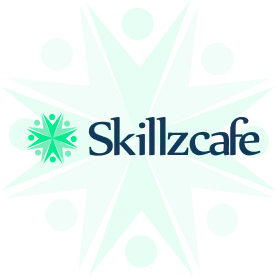Overview of Course
Our Continuous Integration Training is designed to help you master the essential concepts and tools of Continuous Integration (CI). This course is a complete package that will provide you with comprehensive knowledge of Continuous Integration tools and techniques, helping you to become a proficient CI engineer.
Course Highlights

Practical experience in popular CI tools like Jenkins, Travis CI, CircleCI, and GitLab CI.

Learn to write effective build scripts.

Live interactive sessions with industry experts.
Key Differentiators
Personalized Learning with Custom Curriculum
Training curriculum to meet the unique needs of each individual
Trusted by over 100+ Fortune 500 Companies
We help organizations deliver right outcomes by training talent
Flexible Schedule & Delivery
Choose between virtual/offline with Weekend options
World Class Learning Infrastructure
Our learning platform provides leading virtual training labs & instances
Enterprise Grade Data Protection
Security & privacy are an integral part of our training ethos
Real-world Projects
We work with experts to curate real business scenarios as training projects
Skills You’ll Learn
Understanding the fundamentals of Continuous Integration.
Building, testing, and deploying applications using CI/CD pipeline.
Automating the entire build process.
Implementing CI using popular tools like Jenkins, Travis CI, CircleCI, and GitLab CI.
Writing effective build scripts.
Debugging and troubleshooting issues in the CI/CD pipeline.
Training Options



1-on-1 Training
Access to live online classes
Flexible schedule including weekends
Hands-on exercises with virtual labs
Session recordings and learning courseware included
24X7 learner support and assistance
Book a free demo before you commit!

Corporate Training
Everything in 1-on-1 Training plus
Custom Curriculum
Extended access to virtual labs
Detailed reporting of every candidate
Projects and assessments
Consulting Support
Training aligned to business outcomes
 Unlock Organizational Success through Effective Corporate Training: Enhance Employee Skills and Adaptability
Unlock Organizational Success through Effective Corporate Training: Enhance Employee Skills and Adaptability- Choose customized training to address specific business challenges and goals, which leads to better outcomes and success.
- Keep employees up-to-date with changing industry trends and advancements.
- Adapt to new technologies & processes and increase efficiency and profitability.
- Improve employee morale, job satisfaction, and retention rates.
- Reduce employee turnovers and associated costs, such as recruitment and onboarding expenses.
- Obtain long-term organizational growth and success.
Course Reviews
Curriculum
- Definition of programming and coding languages
- Examples of popular programming and coding languages
- Importance of programming and coding languages in software development
- Basic syntax and structure of programming and coding languages
- Benefits of learning programming and coding languages
- Definition of language integration
- Types of language integration (static, dynamic, and hybrid)
- Benefits of language integration (increased interoperability, enhanced functionality, reduced development time)
- Examples of language integration approaches and tools (APIs, web services, middleware)
- Definition of coding and process automation
- Benefits of coding and process automation (increased productivity, reduced errors, improved consistency)
- Tools for coding and process automation (IDEs, code generators, testing frameworks)
- Best practices for managing coding and process automation
- Definition of repository process
- Importance of repository process in software development
- Types of repositories (centralized, distributed)
- Principles of repository process (version control, branching, merging)
- Popular repository tools (Git, SVN)
- Reasons for changing/modifying a code
- Risks associated with changing/modifying a code
- Best practices for changing/modifying a code (code reviews, testing, documentation)
- Tools for changing/modifying a code (IDEs, debuggers)
- Definition of CI/CD (Continuous Integration/Continuous Deployment)
- Benefits of CI/CD (faster development cycles, improved quality, reduced costs)
- Examples of CI/CD tools (Jenkins, Travis CI, CircleCI)
- CI/CD process (build, test, deploy)
- Definition of code integration cost
- Factors that contribute to code integration cost
- Strategies for cutting code integration cost (reuse, automation, standardization)
- Examples of cost-cutting tools and techniques (microservices, containerization, cloud computing)
- Common challenges in software development (scope creep, changing requirements, lack of resources)
- Best practices for handling software development challenges (project management, risk management, communication)
- Tools and techniques for managing software development challenges (agile methodologies, stakeholder engagement, feedback loops)
- Phases of project development (planning, analysis, design, development, testing, deployment, maintenance)
- Best practices for project development (project management, communication, stakeholder engagement, testing)
- Tools and techniques for project development (project management software, collaboration tools, testing frameworks)

 Meet the instructor and learn about the course content and teaching style.
Meet the instructor and learn about the course content and teaching style. Make informed decisions about whether to enroll in the course or not.
Make informed decisions about whether to enroll in the course or not. Get a perspective with a glimpse of what the learning process entails.
Get a perspective with a glimpse of what the learning process entails.
Description

Target Audience:
- Software developers
- DevOps engineers
- Release engineers
- Build and Release engineers
- IT professionals who want to learn Continuous Integration

Prerequisite:
- Basic knowledge of software development
- Familiarity with any programming language
- Understanding of software build process

Benefits of the course:
- Gain in-depth knowledge of Continuous Integration concepts and tools.
- Hands-on experience in popular CI tools like Jenkins, Travis CI, CircleCI, and GitLab CI.
- Learn to write effective build scripts and automate the entire build process.
- Understand the importance of Continuous Integration in the DevOps process.
- Increase your employability and job opportunities.

Exam details to pass the course:
- There is no exam to pass this course.
- You will receive a certificate of completion once you complete the course.

Certification path:
- There are no specific certifications needed to learn this course.
- However, you can take certification exams offered by the CI tool providers like Jenkins, Travis CI, CircleCI, and GitLab CI to demonstrate your proficiency in using their tools.

Career options after doing the course:
- Continuous Integration Engineer
- DevOps Engineer
- Build and Release Engineer
- Release Manager
Why should you take this course from Skillzcafe:

Hands-on experience in popular CI tools.
Live interactive sessions with industry experts.
Affordable pricing.
24x7 on-demand support.
Lifetime access to course materials.
FAQs
Yes, this course is suitable for beginners as well as professionals who want to learn Continuous Integration concepts and tools.
The duration of the course is 50 hours.
Yes, you should have basic knowledge of software development, familiarity with any programming language, and understanding of software build process.
Yes, you will have lifetime access to the course materials.
Yes, you can reach out to our support team 24x7 for any queries or assistance.
Yes, you will receive a certificate of completion once you complete the course.
Please visit our website to know more about the pricing and discounts available.

Provide your workforce with top-tier corporate training programs that empower them to succeed. Our programs, led by subject matter experts from around the world, guarantee the highest quality content and training that align with your business objectives.
-
1500+
Certified Trainers
-
200+
Technologies
-
2 Million+
Trained Professionals
-
99%
Satisfaction Score
-
2000+
Courses
-
120+
Countries
-
180+
Clients
-
1600%
Growth




































 Live Chat
Live Chat